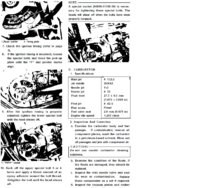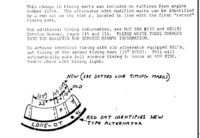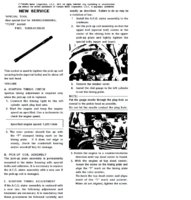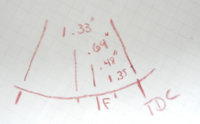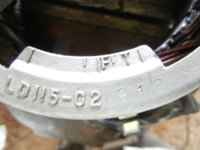Hello, my son picked up this 1983 XS650 for a project. It's running badly.
Compression was good, 145/149.
The symptoms seem like a failing electrical; won't rev past 2,500rpm, acting like it's hitting a rev limiter, and the battery doesn't charge. Pops, spits, backfires when trying to rev higher. When you start the bike, the headlight comes on and gets somewhat brighter as the bike revs, but never develops good voltage to the battery. Maybe 12.8v.
Video of running:
Did the slap test:
Measured the brushes, brand new at 14.7mm. Ohmed the Alternator/Rotor. 5.1 ohms:
 IMG_1093 by michael delage, on Flickr
IMG_1093 by michael delage, on Flickr
Battery voltage standing was good, 12.8v:
 IMG_1094 by michael delage, on Flickr
IMG_1094 by michael delage, on Flickr
Key on, voltage drops to 12.3:
 IMG_1097 by michael delage, on Flickr
IMG_1097 by michael delage, on Flickr
Voltage at brushes 11.7:
 IMG_1098 by michael delage, on Flickr
IMG_1098 by michael delage, on Flickr
Read about jumping the green wire to get full rectifier voltage. Here I'm doing that. You can see the bike is running, yet even with green wire shorted to ground, only 12.2v at idle. Revving it doesn't raise it much at all:
 IMG_1099 by michael delage, on Flickr
IMG_1099 by michael delage, on Flickr
So, what am I missing? I know 90% of all electrical are carburetor related, but the fact that the battery doesn't charge has to be significant, right? Any suggestions?
Michael
Compression was good, 145/149.
The symptoms seem like a failing electrical; won't rev past 2,500rpm, acting like it's hitting a rev limiter, and the battery doesn't charge. Pops, spits, backfires when trying to rev higher. When you start the bike, the headlight comes on and gets somewhat brighter as the bike revs, but never develops good voltage to the battery. Maybe 12.8v.
Video of running:
Did the slap test:
Measured the brushes, brand new at 14.7mm. Ohmed the Alternator/Rotor. 5.1 ohms:
Battery voltage standing was good, 12.8v:
Key on, voltage drops to 12.3:
Voltage at brushes 11.7:
Read about jumping the green wire to get full rectifier voltage. Here I'm doing that. You can see the bike is running, yet even with green wire shorted to ground, only 12.2v at idle. Revving it doesn't raise it much at all:
So, what am I missing? I know 90% of all electrical are carburetor related, but the fact that the battery doesn't charge has to be significant, right? Any suggestions?
Michael
Last edited:


